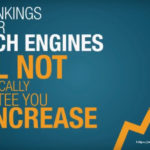In the fast-evolving world of web applications, integrating predictive analytics is becoming increasingly essential for delivering smarter, data-driven user experiences. Machine learning frameworks enable developers to embed predictive models directly into web apps, unlocking capabilities such as customer behavior forecasting, recommendation systems, and anomaly detection. If you are looking to incorporate predictive analytics into your web platform, understanding the best machine learning frameworks is crucial. This article explores top machine learning frameworks suited for building predictive analytics into web apps and how they can accelerate your development process.
Why Use Machine Learning Frameworks for Predictive Analytics?
Predictive analytics leverages historical data to forecast future outcomes, helping businesses make informed decisions. Incorporating predictive models into web apps enhances personalization, improves operational efficiency, and drives better engagement.
Machine learning frameworks simplify this integration by providing pre-built algorithms, tools to train models, and deployment options. They allow developers to focus on solving business problems rather than building algorithms from scratch.
Top Machine Learning Frameworks for Web App Predictive Analytics
1. TensorFlow.js
TensorFlow.js brings Google’s powerful TensorFlow machine learning library to the JavaScript ecosystem. It allows you to train and run ML models directly in the browser or on Node.js servers, making it ideal for web applications requiring fast, client-side inferencing.
- Pros: Runs entirely in the browser, no server round trips needed; wide variety of pre-trained models; active community support.
- Use Case: Real-time image recognition, user behavior prediction, and interactive data visualization in web apps.
2. Scikit-learn
Scikit-learn is a versatile Python ML library well-suited for traditional predictive analytics including classification, regression, and clustering problems. While it itself is Python-based, you can integrate it with web frameworks like Flask or Django to serve models in web apps.
- Pros: Easy to use, extensive documentation, wide array of algorithms.
- Use Case: Backend model training and prediction for web apps with Python backend architecture.
3. PyTorch
PyTorch is an open-source ML framework favored for its flexibility and dynamic computation graphs. It is widely used for developing deep learning models and can be combined with APIs to power predictive analytics in web applications.
- Pros: Dynamic model building, strong research community, extensive support for neural networks.
- Use Case: Complex predictive models such as natural language processing (NLP) and image-based predictions in web services.
4. ML.NET
ML.NET is a Microsoft framework that enables .NET developers to build custom machine learning models. It seamlessly integrates with ASP.NET Core, allowing easy embedding of predictive analytics into C# web applications.
- Pros: Well-suited for .NET environments, supports multiple ML tasks, active Microsoft support.
- Use Case: Enterprise web apps needing predictive features within the .NET ecosystem.
5. RapidMiner and KNIME (No-Code/Low-Code Options)
For developers or teams looking to minimize coding, platforms like RapidMiner and KNIME offer visual workflows to build, test, and deploy predictive models. These can be integrated into web apps through APIs.
- Pros: User-friendly, quick prototyping, supports data preparation and model deployment.
- Use Case: Rapid development of predictive analytics with minimal coding, ideal for smaller teams or prototypes.
Best Practices for Integrating Predictive Analytics in Web Apps
- Data Preparation: Ensure clean, relevant datasets for effective model training.
- Model Selection: Choose algorithms aligned with your prediction goals (classification vs regression).
- Performance Optimization: Optimize models for inference speed, especially if running client-side with frameworks like TensorFlow.js.
- Security and Privacy: Handle sensitive data responsibly and comply with data protection regulations.
- Continuous Learning: Implement pipelines to retrain models periodically using fresh data.
Selecting the right machine learning framework is pivotal for successfully embedding predictive analytics into web applications. Frameworks like TensorFlow.js and Scikit-learn offer robust options depending on your tech stack and project needs. Whether you require client-side inferencing, deep learning capabilities, or seamless backend integration, these frameworks provide the tools to bring intelligent, predictive features to your web apps. Embracing machine learning frameworks accelerates development, enhances user experience, and drives data-informed decision-making processes in modern web solutions.









